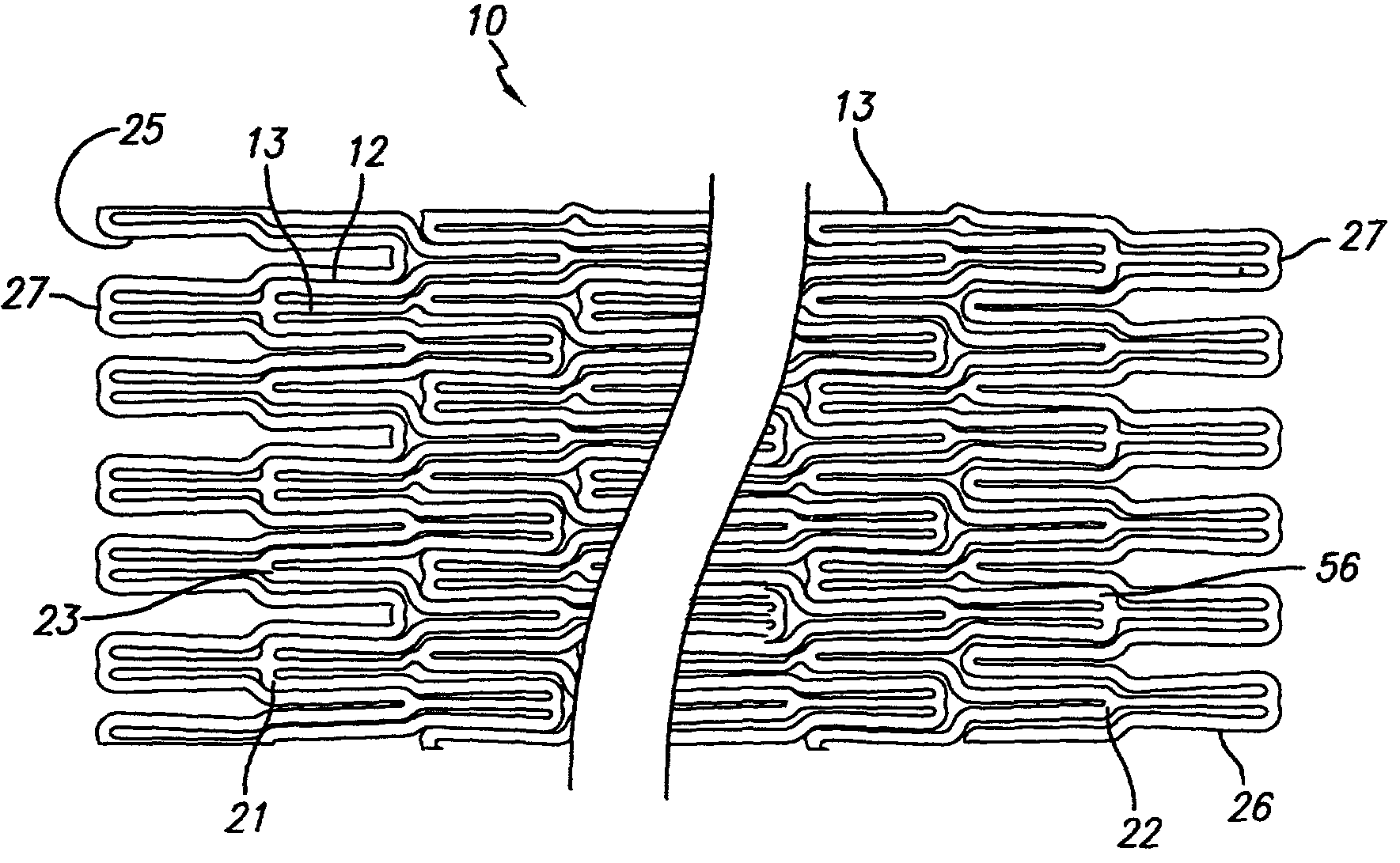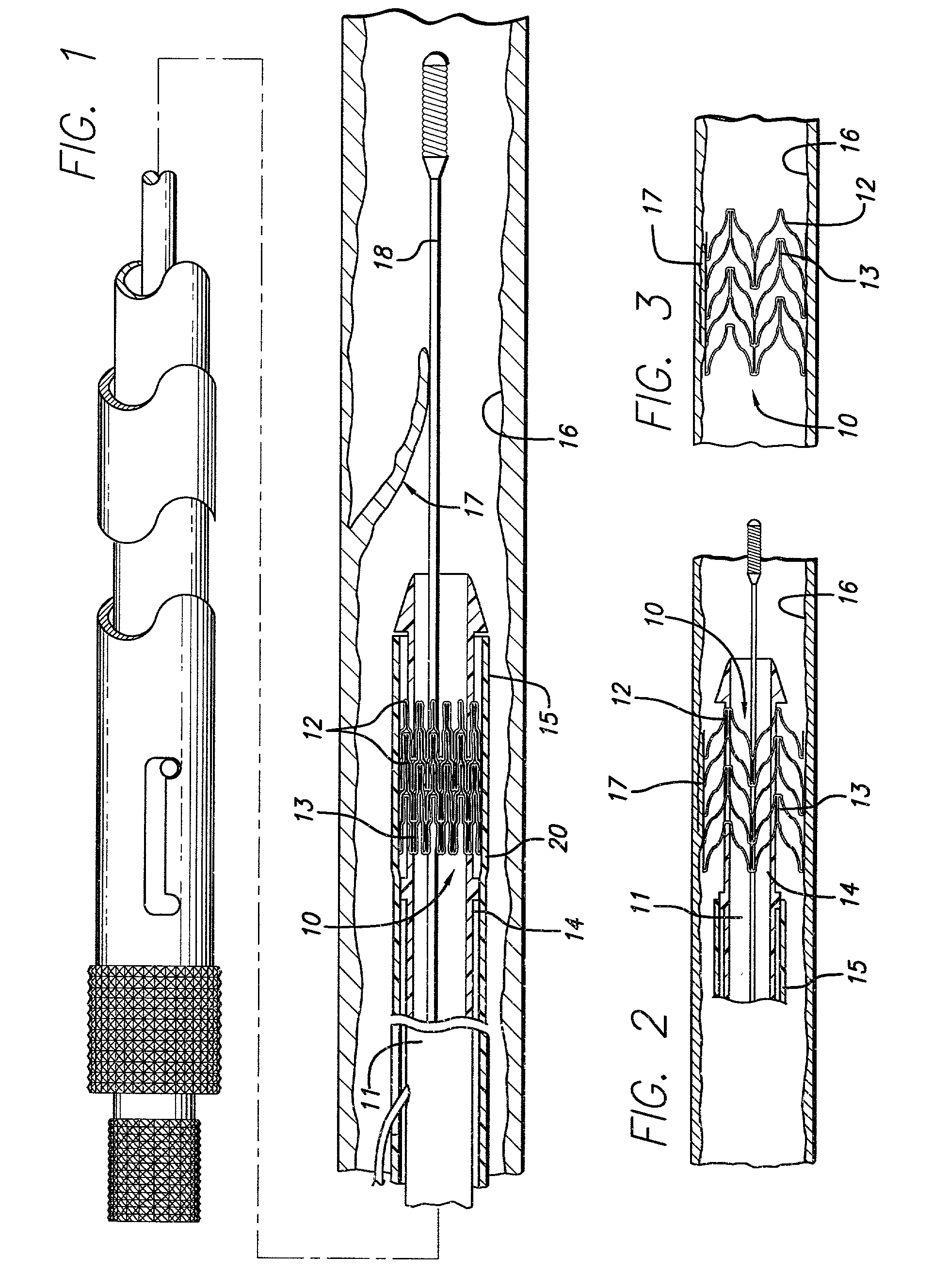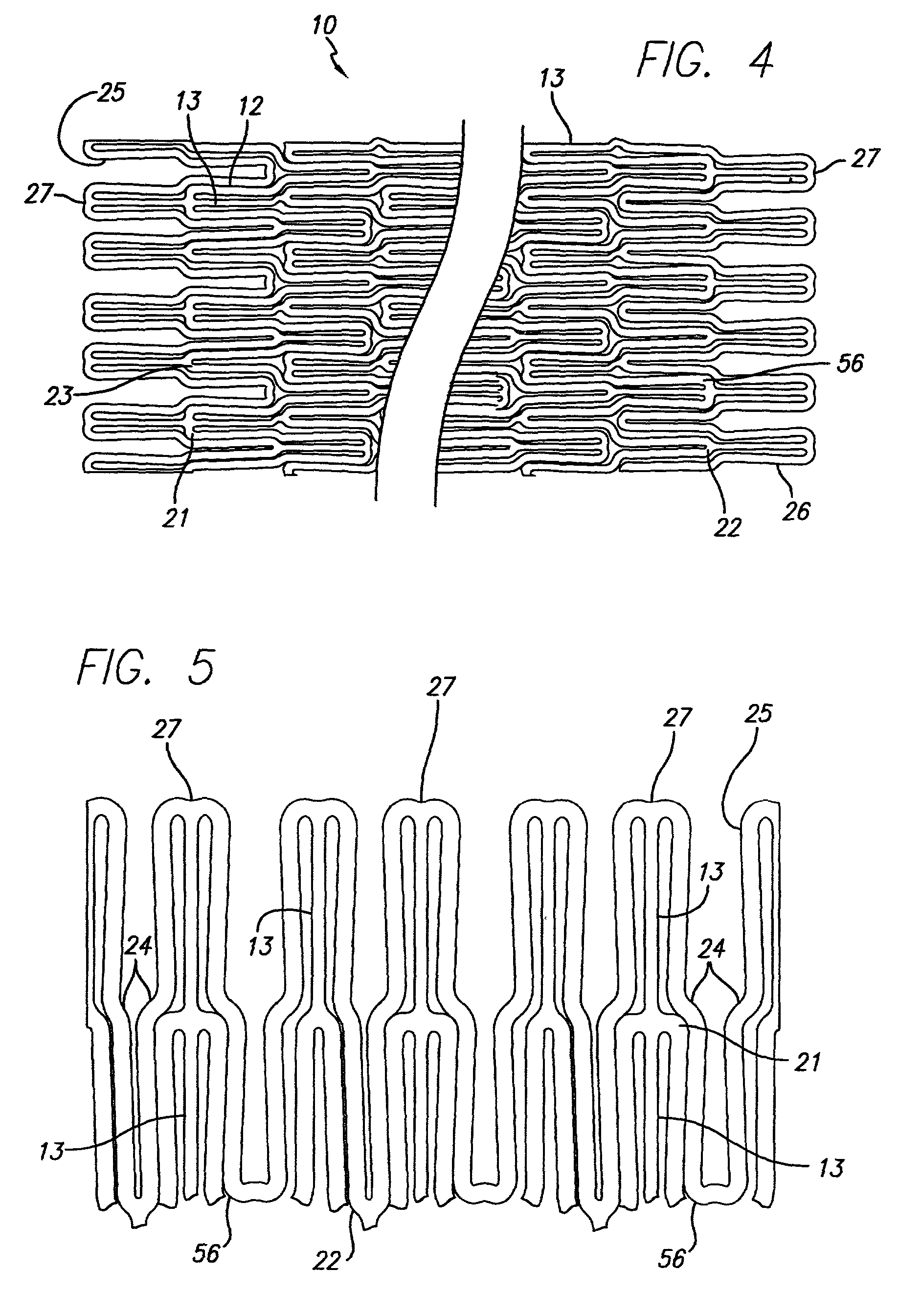Intravascular stents
a technology of endoprosthesis and stent, which is applied in the field of expandable endoprosthesis devices, can solve the problems of lack of both the low profile and extreme flexibility needed, and the size of the body lumen can be quite small, and achieves the effects of improving facilitating delivery, and enhancing the strength of the end of the stent and the overall radiopacity of the sten
- Summary
- Abstract
- Description
- Claims
- Application Information
AI Technical Summary
Benefits of technology
Problems solved by technology
Method used
Image
Examples
Embodiment Construction
[0036]Prior art stent designs, such as the MultiLink Stent™ manufactured by Advanced Cardiovascular Systems, Inc., Santa Clara, Calif., include a plurality of cylindrical rings that are connected by three connecting members between adjacent cylindrical rings. Each of the cylindrical rings is formed of a repeating pattern of U-, Y-, and W-shaped members, typically having three repeating patterns forming each cylindrical element or ring. A more detailed discussion of the configuration of the MultiLink Stent™ can be found in U.S. Pat. No. 5,569,295 (Lam) and U.S. Pat. No. 5,514,154 (Lau et al.).
[0037]Beyond those prior art stents, FIG. 1 illustrates an exemplary embodiment of stent 10 incorporating features of the present invention, which stent is mounted onto delivery catheter 11. FIG. 4 is a plan view of this exemplary embodiment stent 10 with the structure flattened out into two dimensions to facilitate explanation. Stent 10 generally comprises a plurality of radially expandable cyl...
PUM
| Property | Measurement | Unit |
|---|---|---|
| diameters | aaaaa | aaaaa |
| ultimate tensile strength | aaaaa | aaaaa |
| ultimate tensile strength | aaaaa | aaaaa |
Abstract
Description
Claims
Application Information
 Login to View More
Login to View More - R&D
- Intellectual Property
- Life Sciences
- Materials
- Tech Scout
- Unparalleled Data Quality
- Higher Quality Content
- 60% Fewer Hallucinations
Browse by: Latest US Patents, China's latest patents, Technical Efficacy Thesaurus, Application Domain, Technology Topic, Popular Technical Reports.
© 2025 PatSnap. All rights reserved.Legal|Privacy policy|Modern Slavery Act Transparency Statement|Sitemap|About US| Contact US: help@patsnap.com



